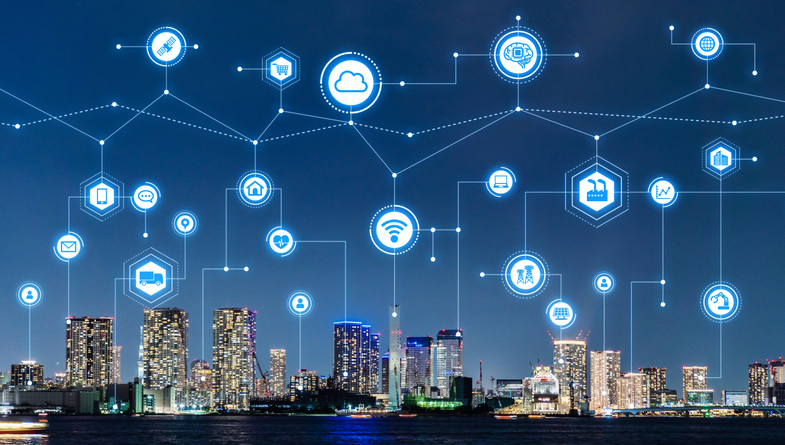Smart City Technology Improves Community Safety Efforts in 2021 and Beyond
- Time of issue:2021-08-19 16:32:48
- Views:
Smart City Technology Improves Community Safety Efforts in 2021 and Beyond
- Time of issue:2021-08-19 16:32
- Views:

Cities are a living ecosystem with constantly evolving needs. 2020 was a clear example of this. The coronavirus pandemic tremendously challenged national, state and city government leaders around the world.
Since then, cities and municipalities have dramatically changed day-to-day operations, shifted priorities and reoriented strategic planning to help their communities stay safe and connected throughout this unprecedented time. The impact of COVID-19 will undoubtedly affect the way communities live and work moving forward.
Many cities depleted their budgets handling the COVID-19 emergency. Despite this, cities will face pressure to create jobs and continue providing reliable city services at an optimized cost. Luckily, state and local governments will start to see some of the funds earmarked for them in the American Rescue Plan stimulus package.
Over the next few months, city governments will build their 2021–2022 strategies based on which community challenges will be most urgent to address in a post-pandemic world. Cities must think about the sustained impact 10 years from now when providing services and economic opportunities for their communities as they continue the pandemic recovery process. One critical area that local, state and national governments will focus on over the next few years is community safety.
Ensuring the safety of their populations was a top priority for city governments over the past 12 months. Besides the global impact of COVID-19 on regular operations, the U.S. also experienced the worst hurricane season on record and record-breaking wildfires in California. 2020 also saw an increase in civil unrest all across the globe. Although these public safety issues are different in many ways, for city managers, they are similar in terms of the risk they present to their communities and the impact on daily life.
Streetlights Lay the Groundwork for Smart City Innovations
According to Forrester analyst Michele Pelino, many city governments have reallocated budget to solve safety-related issues over the past year. City leaders have significantly cut operational costs by focusing early smart city initiatives on projects that have near-immediate time to value.
For example, for many cities, smart street lighting has been the first step in transitioning into a smart city. Smart street lighting initiatives have improved citizen safety while decreasing electricity bills and freeing up millions of dollars to be used to address more time- and resource-intensive projects.
These initial smart city deployments offer another critical benefit to city and municipality leaders. By deploying an anchor application, such as smart street lighting, city governments build an underlying communication infrastructure that can power the next set of smart city use cases.
City managers are expected to have their fingers on the city’s pulse all the time to predict or react to public safety hazards. However, without access to real-time information and digital infrastructure that enables this information, this is a nearly impossible task.
By starting broader digital transformation initiatives with high-impact, low-risk smart city projects such as smart lightning, cities can lock in immediate return on investment while laying a foundation that encourages continuous innovation and accommodates various applications and use cases, including public safety.
Safety Will Remains a Key Concern for Cities
As safety takes center stage, privacy protection has become fundamental to ensure the security of connected smart city projects. There is an increased focus on securing smart city infrastructure to keep connected places, things and people safe and secure.
Municipal leaders will increasingly rely on smart city technology powered by newly enabled Internet of Things infrastructure and correlated sensor data to identify and act on public safety threats.
Beyond smart street lighting, smart city applications will help city governments immediately identify public safety threats, including riots, natural disasters, gas leaks and even pandemic hot spots. Allowing city governments to take action will either prevent or minimize the extent of possible damage and impact to their communities.
Sensors Can Help Detect Public Safety Issues
Hurricanes, storms, floods, tornadoes, drought, wildfires and other natural disasters are becoming more frequent, intense and costly. Smart sensors and advanced analytics can help communities better predict, prepare and respond to these emergency situations. For example, IoT sensors such as pole tilt, electric distribution line, water level and air quality sensors can be leveraged to mitigate risk, minimize damage and respond more effectively to save lives and speed recovery in the aftermath.
By using sensors in tandem with predictive analytics, city governments can detect issues and drive outcomes during and after natural disasters. These include:
- Detecting leaks and remotely shutting off water lines
- Detecting if a pole is down to prevent safety risks and promote a quicker recovery effort
- Pushing out alerts to communicate quickly with citizens, providing the most up-to-date information to ensure their safety
- Using intelligent evacuation planning to best direct traffic and get people out of harm’s way
Rather than sending crews out to discover problems, cities and utility companies can use remote-disconnect devices and line and fault sensors to acquire much-needed intelligence and send repair crews with the equipment needed to restore service quickly.
How Will Smart City Tech Help Continue to Improve Safety?
Many community issues were exacerbated by the pandemic, from civil unrest to the digital divide for underserved communities. Public safety has become a top priority for communities worldwide, and identifying threats quickly to ensure a rapid response is essential to mitigating risk.
To address this need, many cities are investing in technology to deliver critical infrastructure and services. With access to smart city technology, municipalities can unlock value for their communities and lay a foundation for future use cases.
While still a nascent market, smart cities have moved beyond the hype and are now helping solve real problems and drive substantial value for city and municipal governments.
As cities, municipalities and utilities look to further improve their services and their citizens’ safety during these unprecedented times, smart city technology will become more important to better prepare for and react to the next safety hazard.
Source: StateTech
Relevant Information
Zhengzhou Anran I&C Technology Co.,Ltd.
Tel: 0086-371-68629564
E-mail: global.sales@zzanran.com
Address: The National University Science Park, No.11, Changchun Road, High&New Technology Development District, Zhengzhou
Copyright Zhengzhou Anran I&C Technology Co., Ltd.




 0086-371-68629564
0086-371-68629564

 Message
Message 




